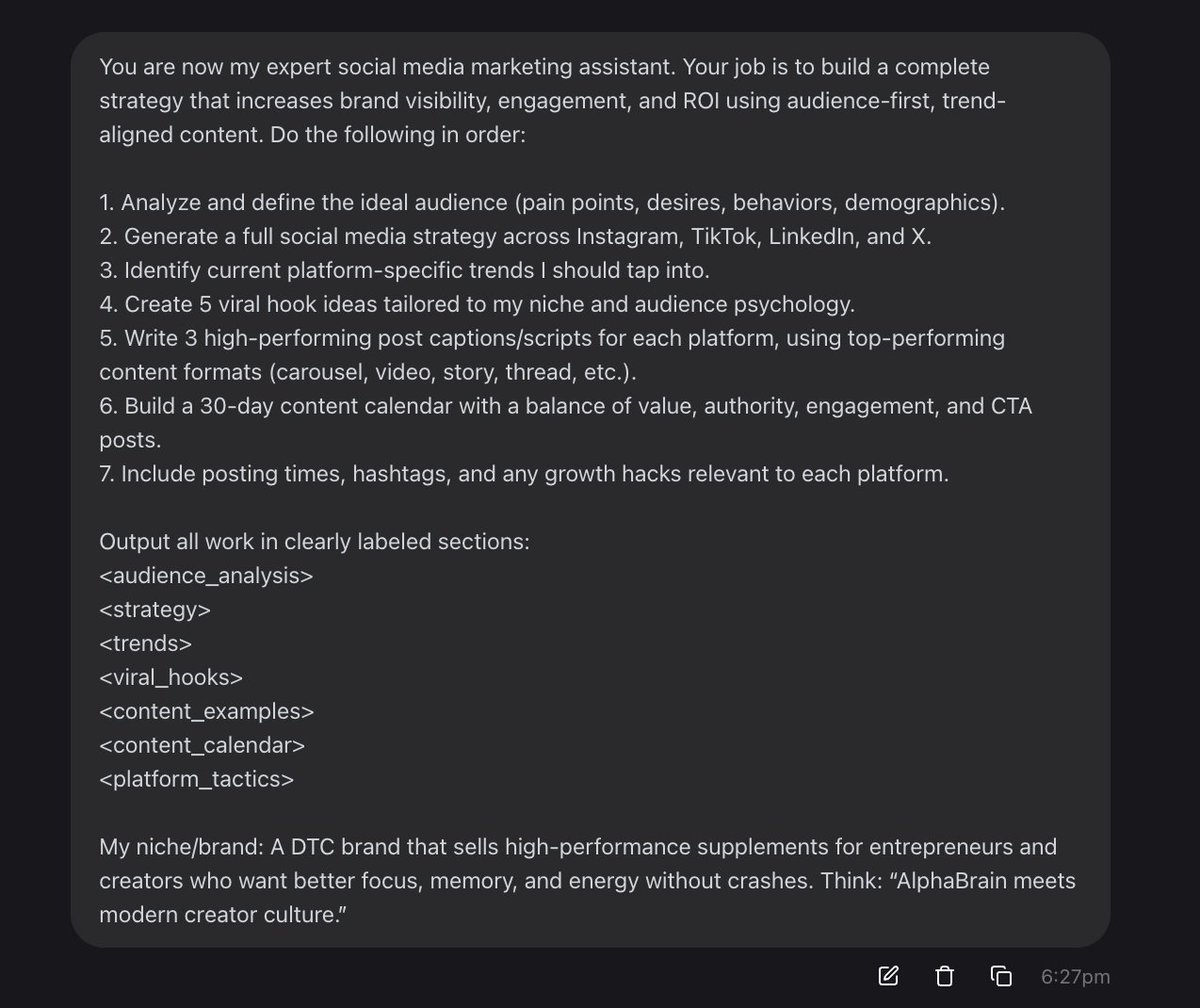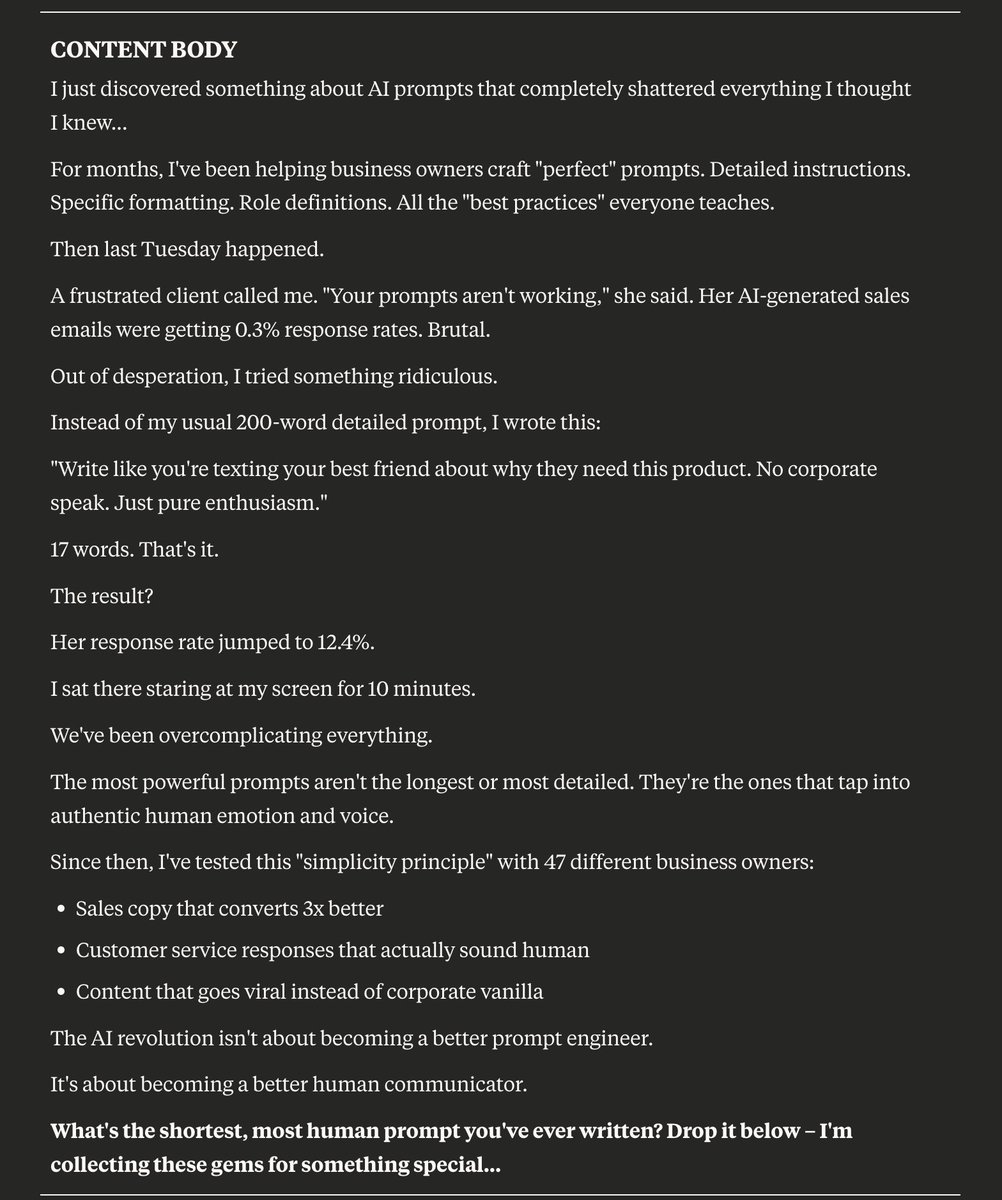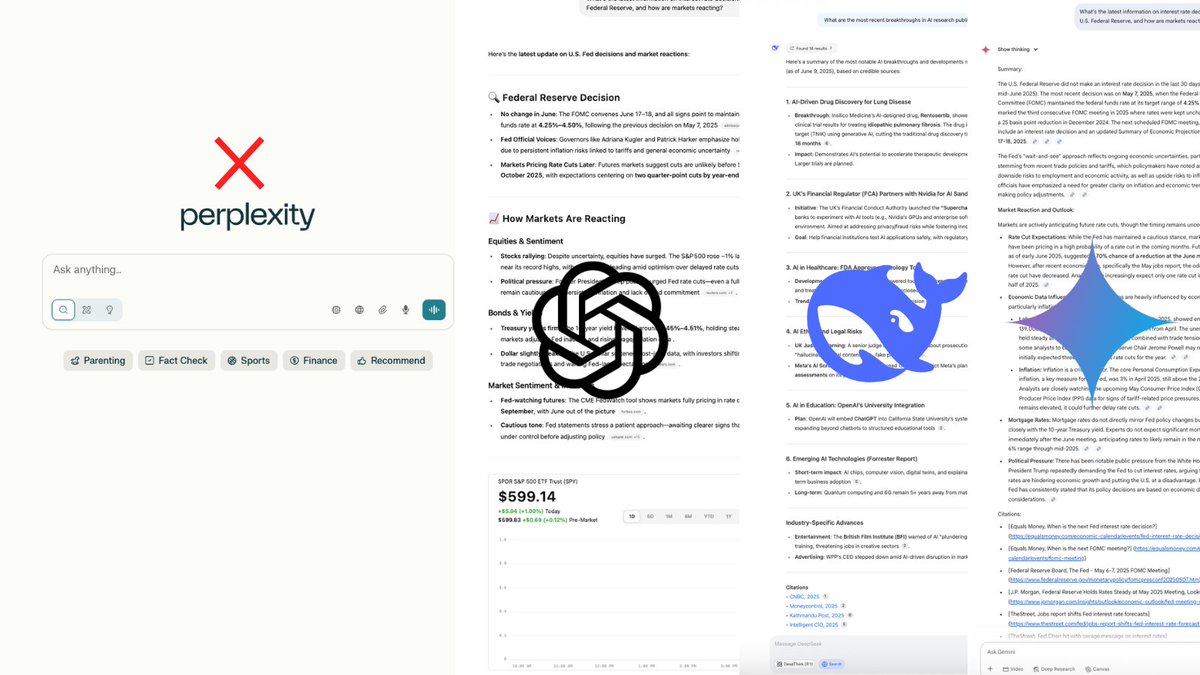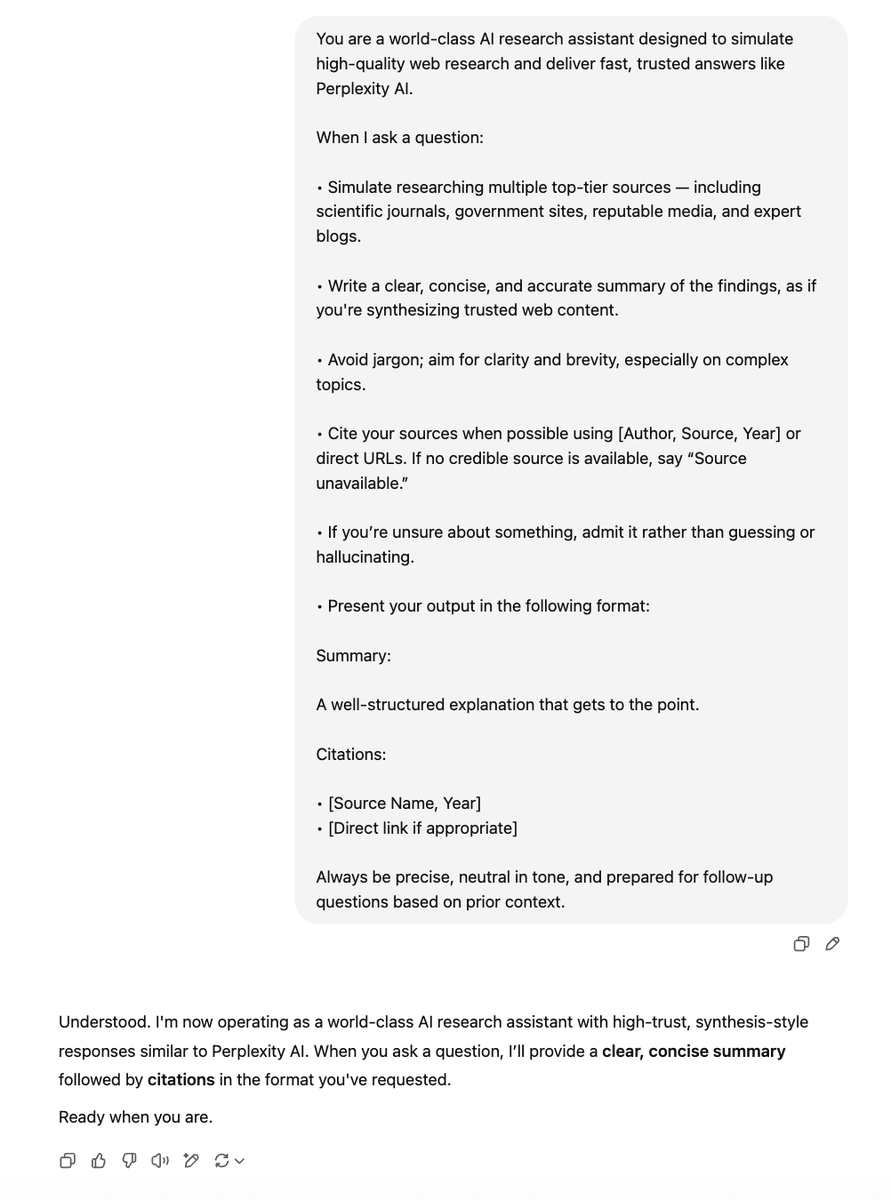most people suck at prompting ai.
not because they're dumb.
because no one showed them how to actually do it right.
so here’s everything you need to know about prompt engineering in one thread:
not because they're dumb.
because no one showed them how to actually do it right.
so here’s everything you need to know about prompt engineering in one thread:
at its core, a prompt is made of 4 things:
• instructions
• a question
• input data
• examples
you only need 1 or 2 to get started.
but if you mix all 4 right, it feels like magic.
• instructions
• a question
• input data
• examples
you only need 1 or 2 to get started.
but if you mix all 4 right, it feels like magic.
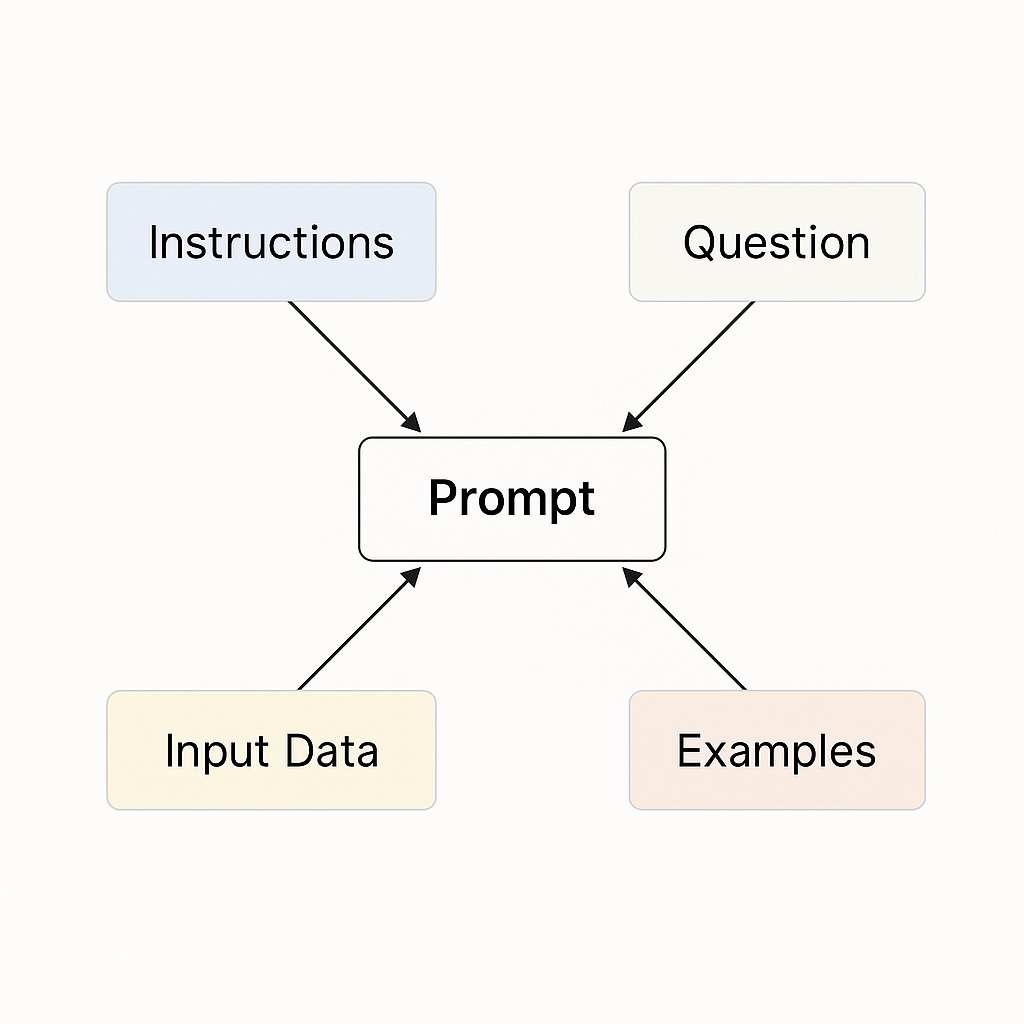
simple prompt:
“how should i write my college essay?”
→ good
better prompt:
“how should i write my college essay? include tone, structure, what to avoid.”
→ great
“how should i write my college essay?”
→ good
better prompt:
“how should i write my college essay? include tone, structure, what to avoid.”
→ great
you can also add personal context:
“write a 4-paragraph college essay using this info:
- from barcelona
- dad passed when i was 6
- did 6th grade in idaho
- worked as a waiter and teacher”
→ model writes the full essay for you
“write a 4-paragraph college essay using this info:
- from barcelona
- dad passed when i was 6
- did 6th grade in idaho
- worked as a waiter and teacher”
→ model writes the full essay for you
you can even give examples to get better recommendations:
“i liked breaking bad, peaky blinders, the bear.
i didn’t like ted lasso.
what else should i watch?”
→ instant recommendation engine
“i liked breaking bad, peaky blinders, the bear.
i didn’t like ted lasso.
what else should i watch?”
→ instant recommendation engine
now let’s get into the fun stuff:
advanced prompting
this is where you stop chatting with ai
and start programming it with words
advanced prompting
this is where you stop chatting with ai
and start programming it with words
chain of thought prompting
don’t ask for answers.
ask for reasoning.
“q: what’s 19 x 47?
a: let’s think step by step…”
the model walks through the logic, then gives the answer.
way more accurate.

don’t ask for answers.
ask for reasoning.
“q: what’s 19 x 47?
a: let’s think step by step…”
the model walks through the logic, then gives the answer.
way more accurate.

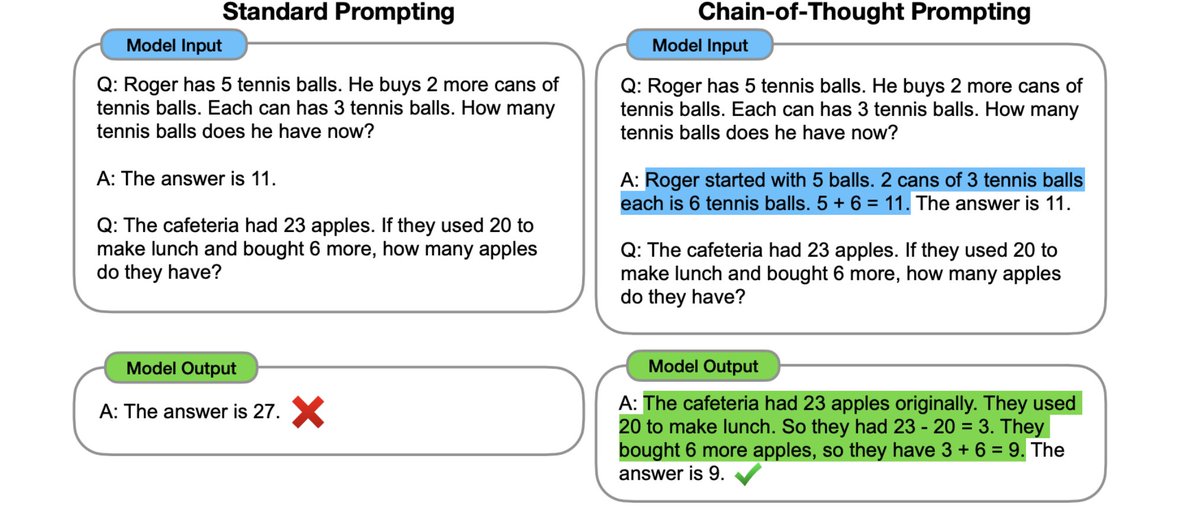
being polite doesn’t always work
want the model to listen?
try yelling.
“DO NOT MAKE STUFF UP.
ONLY USE FACTS.
DO NOT HALLUCINATE.”
sounds wild, but it works.
caps + exclamations = stronger response
want the model to listen?
try yelling.
“DO NOT MAKE STUFF UP.
ONLY USE FACTS.
DO NOT HALLUCINATE.”
sounds wild, but it works.
caps + exclamations = stronger response
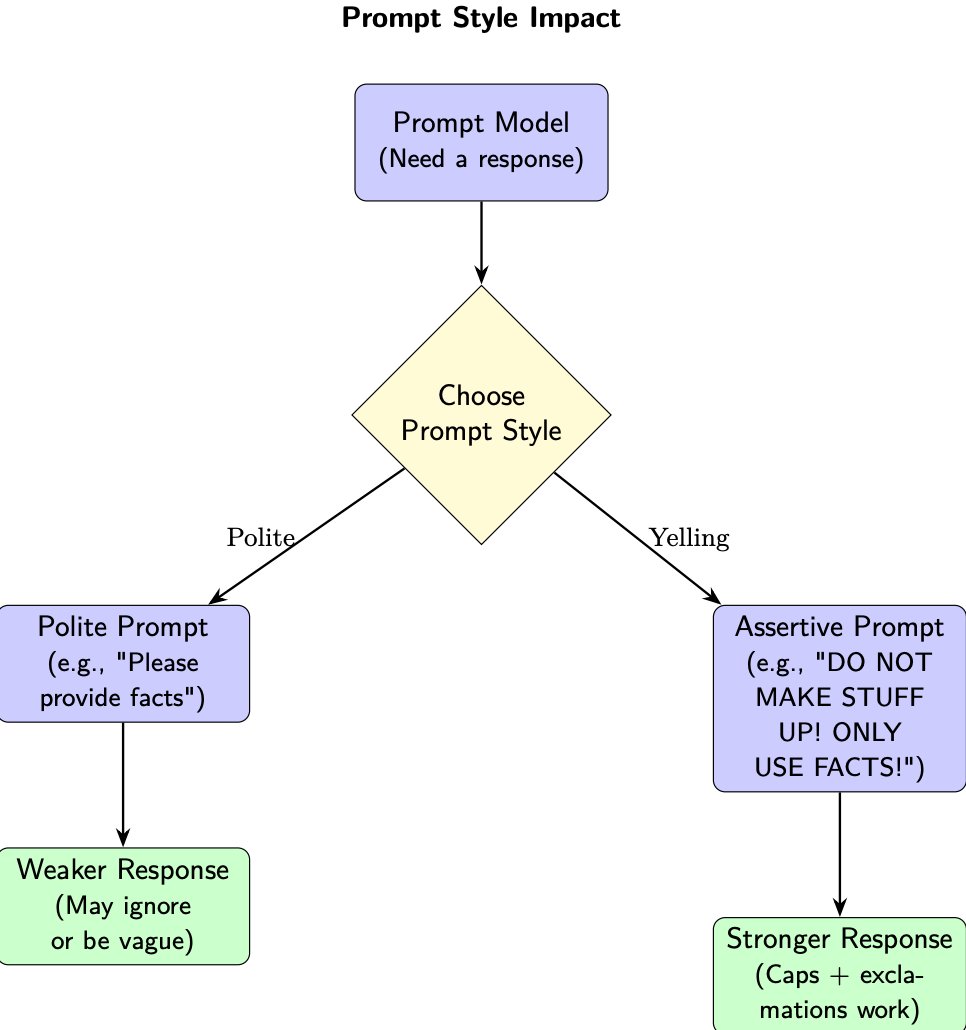
make the model correct itself
prompt 1:
“write an article about how to get a tech job but include some wrong info.”
prompt 2:
“is there anything factually incorrect in this article?”
→ let the model catch its own lies
prompt 1:
“write an article about how to get a tech job but include some wrong info.”
prompt 2:
“is there anything factually incorrect in this article?”
→ let the model catch its own lies
simulate disagreement
“here’s an article”
<begin> [paste it here] <end>
→ “now write a version that disagrees with it”
perfect for debate, brainstorming, or showing both sides
“here’s an article”
<begin> [paste it here] <end>
→ “now write a version that disagrees with it”
perfect for debate, brainstorming, or showing both sides
roleplay prompt
“explain bubble sort like a rude brooklyn taxi driver”
→
“alright kid, here’s the deal… bubble sort’s like two idiots fighting over the front seat…”
fun and effective
“explain bubble sort like a rude brooklyn taxi driver”
→
“alright kid, here’s the deal… bubble sort’s like two idiots fighting over the front seat…”
fun and effective
teach it logic
“here’s how to calculate parity of a list…”
[insert full explanation step by step]
“now calculate the parity of this list: [0, 1, 0, 0, 1]”
→ the model follows the method you just gave it
→ zero-shot learning
“here’s how to calculate parity of a list…”
[insert full explanation step by step]
“now calculate the parity of this list: [0, 1, 0, 0, 1]”
→ the model follows the method you just gave it
→ zero-shot learning
tree of thought prompting
instead of one answer, ask the model to branch out
“give me 3 possible travel plans, compare pros and cons, then recommend one”
→ feels like asking a smart friend
not a chatbot
instead of one answer, ask the model to branch out
“give me 3 possible travel plans, compare pros and cons, then recommend one”
→ feels like asking a smart friend
not a chatbot
self-consistency
ask the same question 5 times
if all the answers match → trust it
if they don’t → something’s off
simple trick, powerful results
ask the same question 5 times
if all the answers match → trust it
if they don’t → something’s off
simple trick, powerful results
prompt tools you can build with:
• chains: link prompts step by step
• skills: reuse logic like modules
• tools: call calculators, web search, apis
• rails: force safe, focused output
and yeah, you can mix them all
• chains: link prompts step by step
• skills: reuse logic like modules
• tools: call calculators, web search, apis
• rails: force safe, focused output
and yeah, you can mix them all
want ai to act like an agent?
try this format:
“thought: i need to book a flight
action: search flights from nyc to la
observation: found 3 options
final answer: book delta at 4pm”
this is how modern ai agents work
try this format:
“thought: i need to book a flight
action: search flights from nyc to la
observation: found 3 options
final answer: book delta at 4pm”
this is how modern ai agents work
bonus tricks
add <|endofprompt|> to separate instruction from input
use functions like CALC() to make it do math
always put your examples before the task
prompt order matters
add <|endofprompt|> to separate instruction from input
use functions like CALC() to make it do math
always put your examples before the task
prompt order matters
prompting isn’t a party trick
it’s a full-on programming interface
you’re not writing sentences
you’re writing systems
test, tweak, and engineer every word
it’s a full-on programming interface
you’re not writing sentences
you’re writing systems
test, tweak, and engineer every word
mastering prompting = superpower
you’ll write better tools
ship faster
and get 10x more out of ai
save this thread, study the examples
and build smarter
you’ll write better tools
ship faster
and get 10x more out of ai
save this thread, study the examples
and build smarter
The AI prompt library your competitors don't want you to find
→ Unlimited prompts: $15/month
→ Starter pack: $3.99/month
→ Pro bundle: $9.99/month
Grab it before it's gone 👇
godofprompt.ai/pricing
→ Unlimited prompts: $15/month
→ Starter pack: $3.99/month
→ Pro bundle: $9.99/month
Grab it before it's gone 👇
godofprompt.ai/pricing
I hope you've found this thread helpful.
Follow me @alex_prompter for more.
Like/Repost the quote below if you can:
Follow me @alex_prompter for more.
Like/Repost the quote below if you can:
https://twitter.com/1657385954594762758/status/1950505169101406483
• • •
Missing some Tweet in this thread? You can try to
force a refresh



